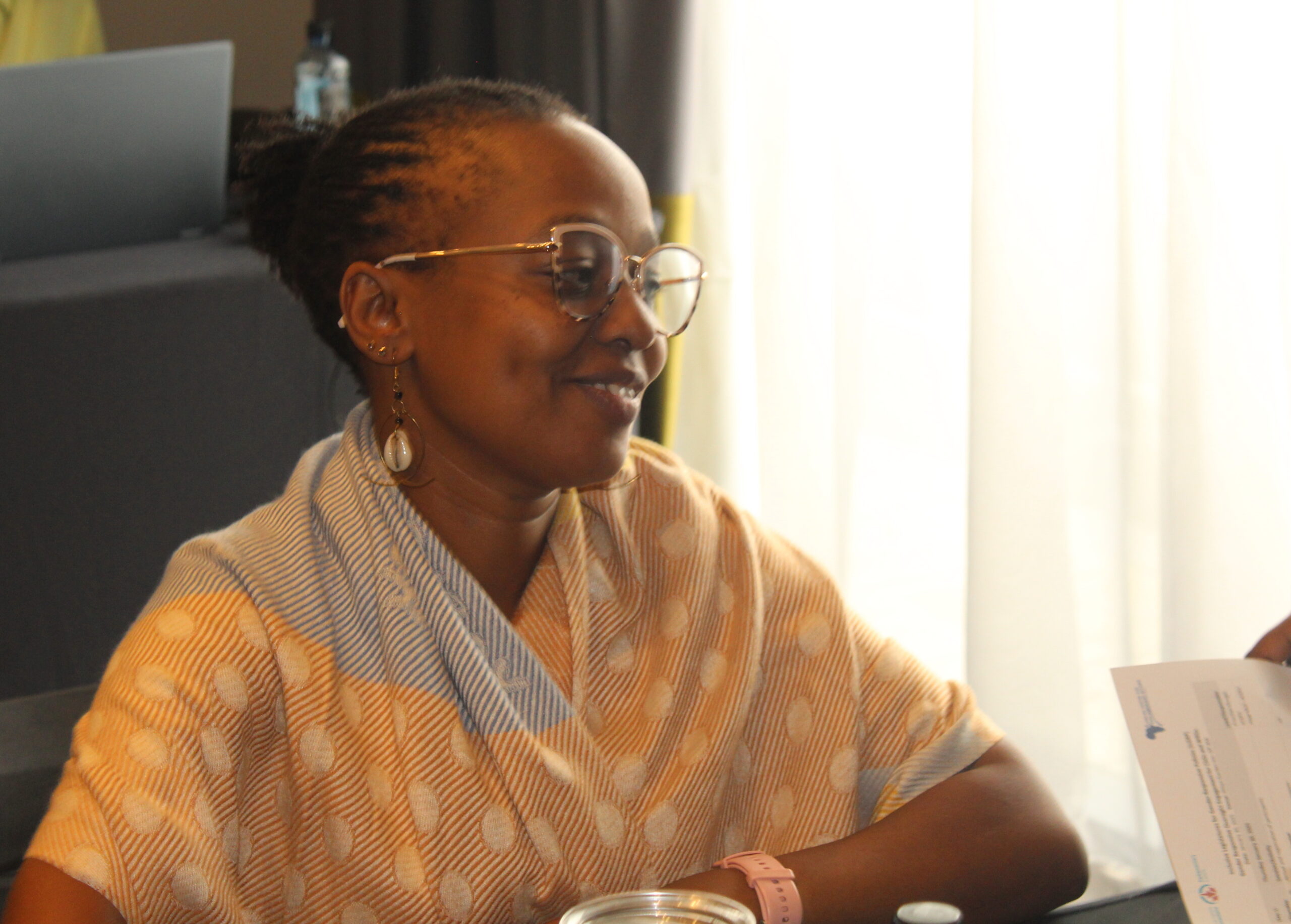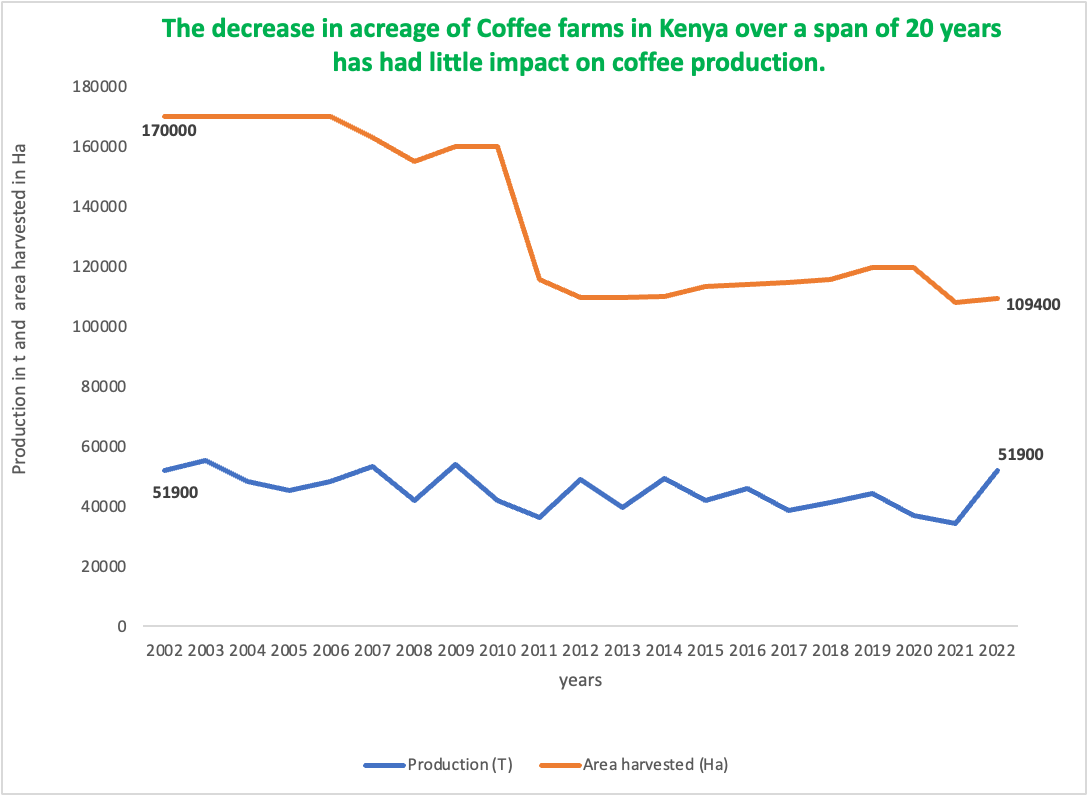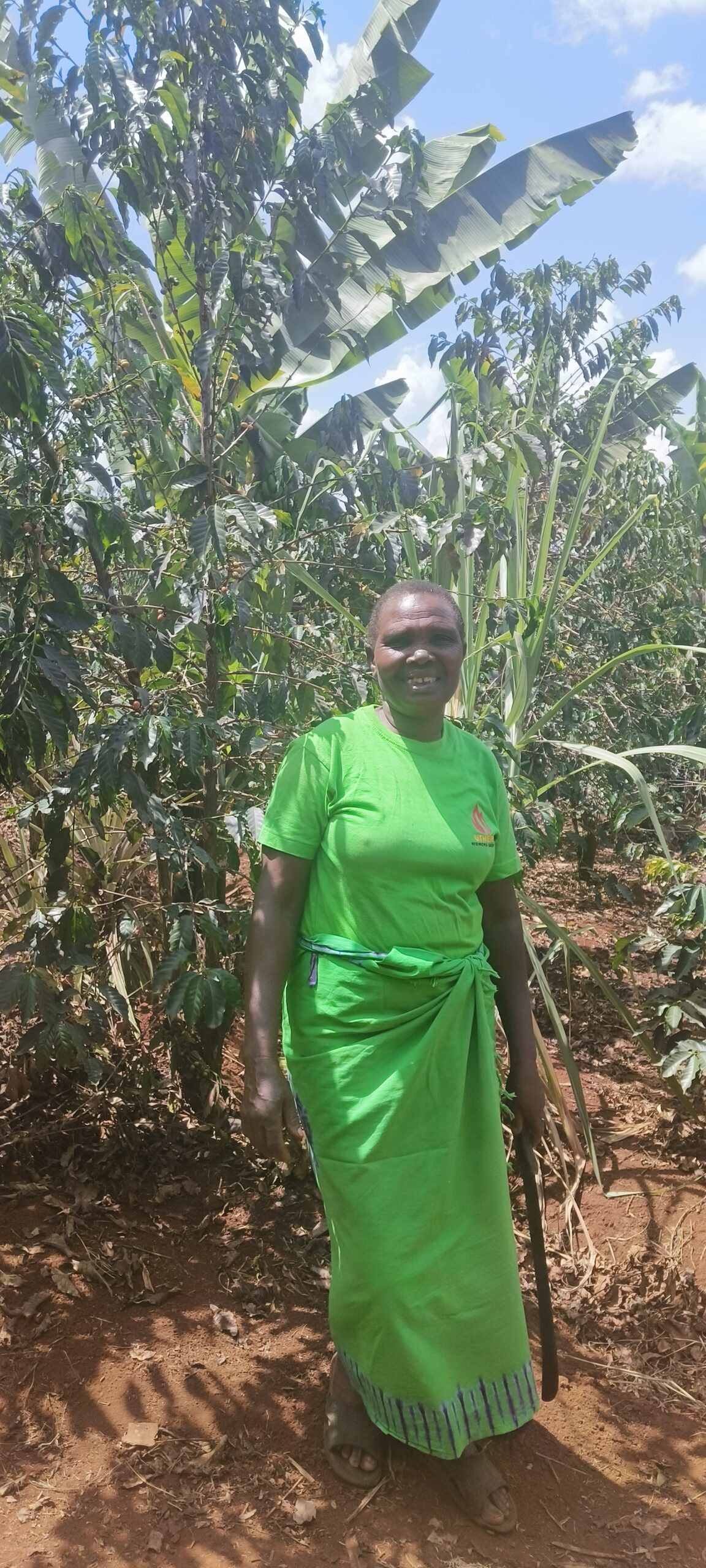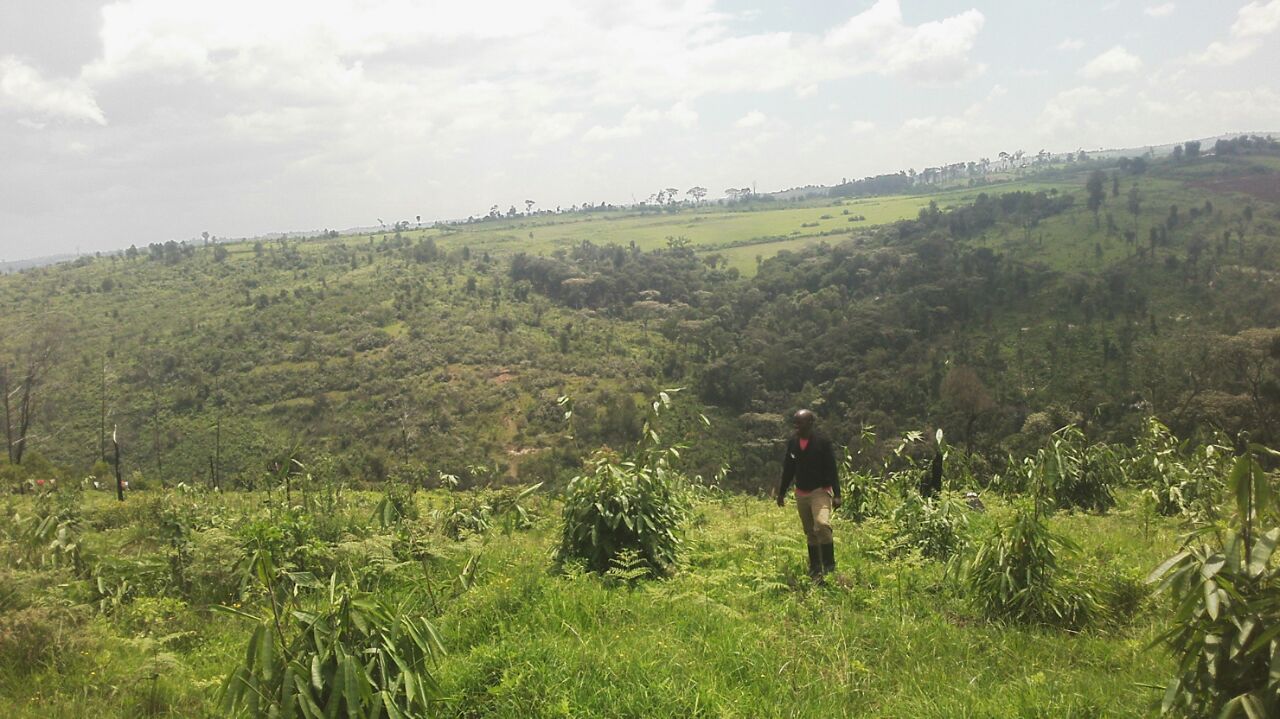By Sharon Kiburi
Kirinyaga County, Kenya: Climate change has contributed to coffee cultivation’s descent from a profitable venture to a financial liability for most Kirinyaga County, Kenya, farmers.
Kirinyaga County lies gracefully on the slopes of the majestic Mount Kenya, offering breathtaking views of one of Africa’s highest peaks. The name ‘Kirinyaga’ comes from the Kikuyu language, which translates to ‘the dwelling place of God,’ reflecting the region’s profound cultural significance and serene, spiritual atmosphere. This area is known for its lush landscapes, rich agriculture, and vibrant local communities, all of which contribute to its unique charm and beauty.
We caught up with Wambui Muchaba, an Environmental and climate Resilience Specialist in Kenya and the current programs director at Inclusive Climate Change Adaptation for a Sustainable Africa (ICCASA). She said coffee has been Kenya’s most profitable cash crop for decades, driving rural economies and sustaining millions of livelihoods. “However, climate change is now undermining that prosperity, turning coffee farming from a reliable source of income into a financial burden,” Wambui Muchaba observed.

Wambui explained a clear connection between climate change and the disruption of coffee production. Farmers are earning less while spending more to maintain their farms. “A study on smallholder farmers in central Kenya revealed that climate-induced reductions in yields have led many to abandon coffee farming altogether, as it no longer provides enough income to support their families. Productivity has dropped by up to 70% in some regions over the past 30 years, rendering coffee farming unsustainable, ”stated Wambui.
The financial impact on farmers has been devastating. With lower yields, many are unable to cover essential household expenses like school fees, medical bills, and daily food supplies.
“In Murang’a County, where production has decreased fivefold, farmers who once thrived on coffee now struggle to afford basic necessities,” says Wambui.
Farmers are combating climate challenges by adopting climate-resilient crops and diversifying their income. A study in central Kenya found that smallholder coffee farmers who added dairy farming were more financially stable than those who only grew coffee. Many are also planting new coffee varieties like Ruiru 11 and Batian, which resist disease and drought.
However, these efforts may not be enough. The high costs of adaptation, combined with a lack of government support and investment in climate-smart agriculture, put Kenya’s coffee sector at risk of collapse.
“Without urgent measures like developing climate-resistant coffee varieties and improving irrigation, Kenya’s once-thriving coffee industry may disappear,” said Wambui.
According to the Coffee Report, climate change affects coffee yields and quality and increases pests and disease incidences. Increased temperatures, reduced rainfall, and seasonal changes due to climate change affect coffee trees’ metabolism processes, such as photosynthesis, respiration, and flowering, negatively affecting coffee yields.

“Increased temperatures make coffee berries expand and ripen more quickly, leading to a decline in coffee quality,” stated Francis Murage, an Agricularist and a PhD student in sustainable rural development at the Czech University of Life Sciences Prague. Further, Murage said that the increase in temperatures and humidity due to climate change also increases coffee pests and disease incidences and makes them thrive in regions and areas where they are not meant to thrive. In the long run, climate change will also change and reduce coffee-suitable regions due to global warming and decreasing rainfall.
Meanwhile, according to Professor Mwangi Kinyanjui, PhD in Natural Resources Conservation and Research, Coffee, like many other crops, is vulnerable to climate change. Coffee is mainly grown in high-altitude regions of Kenya (1400 to 2000 m a.s.l.), which experience cool to moderately warm humid conditions. “Such conditions are mainly found in the central highlands of Kenya and the slopes of Mt Elgon.”
Professor Kinyanjui further explained that the temperature range of Arabica coffee is 18-24 degrees Celsius, while Robusta coffee grows in areas of 22-26 degrees Celsius, and the ideal rainfall is between 1,000mm and 2,000mm annually.
Moreover, Prof Kinyanjui says as temperatures rise due to climate change, the coffee-growing zone in Kenya has been shrinking. Coffee arabica, which comprises about 70% of Kenya’s coffee production, is most affected by the lower temperature. “Kenya is projected to see a temperature rise from 1.2°C to 3.2°C by 2080. Therefore, even without considering other weather parameters, temperature rise alone harms Kenya’s coffee production,” noted Prof Kinyanjui.

The unpredicted Rainfall and elongated droughts reduce moisture available for growing coffee, causing production to decrease. “Cyclic droughts have been recorded at about 10-year intervals in Kenya and were reported in 1974. 1984, 1994, 2004, 2014 and 2024 or years adjacent to them,” narrated prof Kinyanjui. Adding these moisture-insufficient years are expected to decrease, resulting in lesser productivity in coffee farms.
Another cause of the decrease in coffee yields is frost, which occurs in extremely low temperatures due to climate change and human interference with regulatory vegetation.
“Frost can severely damage coffee plants, reducing their ability to produce coffee. Frost can destroy flower buds, flowers, and fruits and cause frost burns on the leaves Kirinyaga being on the slopes of Mount Kenya, could experience frost,” stated Prof Kinyanjui.
Climate change is a predicament that the Kenya government has tried to get ahead of by including responsive measures anchored in policy. Key initiatives include the National Climate Change Framework Policy, the Climate Change Act (2016), the Climate Change Amendment Act (2023), the National Climate Change Action Plan III (2023-2027), the Climate Change (Carbon Markets) Regulations (2024), and the Long-term Low Emissions Development Strategy (2022-2050).
Geared towards progress, Kenya’s NDC has been revised and updated, and it commits to abate GHG emissions by 32 percent compared to the first NDC target of 30 percent by 2030 relative to the BAU scenario of 143 MtCO2eq. Unlike the first NDC, which was wholly conditional on support, the update commits to mobilizing resources to meet 13 percent of the estimated implementation budget of USD 62 billion, requiring international support of 87 percent.
Despite such efforts, the agriculture sector in Kenya remains affected by changing climates and weather patterns. The degree to which people are affected by climate change is directly linked to their vulnerability. Social status, gender, poverty level, livelihood options, and access to and control of resources influence vulnerability and how different people experience climate change. Coffee farmers, particularly in Kirinyaga County, are grappling with this challenge as climate change affects the coffee bushes, causing low quality and a lower quantity of cherries.
Sabina Wawira Ndega, 59, has spent her entire life in Kirinyaga County, south of Mount Kenya, where she has experienced the decline of the region’s once-thriving coffee industry.
“In the late seventies and eighties, families with coffee bushes enjoyed a reputation for being well-off,” she says. “My parents worked very hard to send all six of us to school and put food on our table, all thanks to the income generated from our coffee farming.”

When she had her own daughters, Ndega’s parents gifted her a portion of land, including coffee bushes, to cultivate. Unfortunately, coffee sales, prices, and yields declined, making it difficult to provide for her family.
“I had to supplement my income through other means, including food farming of crops such as spinach, cabbage, maize, arrowroots, and bananas,” Ndega explained. “Currently, given the high input costs for coffee farming and the minimal profits, my children are not interested in pursuing coffee farming,” she added.
Coffee bean harvests in Kenya have been falling, and increasingly, bean quality does not meet international standards. Drought and other extreme weather exacerbated by climate change are part of the problem, increasing the need for farm inputs, including chemical pesticides.
With so many farmers struggling to maintain their labour-intensive coffee crops, the country must address these climate challenges effectively. Solutions include ensuring prompt payments to farmers and promoting the planting of drought and pest-resistant coffee varieties. By doing so, Kenya can pave the way to a more sustainable future for its coffee industry and the communities that depend on it.
Climate change leads to the increasing use of chemicals
As well as worsening the impacts of drought, rising temperatures have increased the incidence of diseases and pests, such as Coffee Berry Disease (CBD) and thrips, Murage says.
In the past, coffee farmers in Kirinyaga County, Kenya, sprayed their coffee crops with copper-based fungicides once or twice a year to protect the bushes from adverse cold weather conditions. However, recent years have seen a change, with farmers spending much money on ineffective cold-resistant fungicides.
“The issue is that most farmers are misusing the pesticides, resulting in resistance to diseases and pests. This results in the ineffectiveness of these pesticides, affecting the young and expanding coffee berries by diseases such as CBD, which later fall off from the trees, resulting in reduced yields,” said Murage.
He advised farmers to adopt disease-resistant coffee varieties to minimize pesticide use, to use pesticides properly, and to manage coffee bushes properly by pruning them on time.
Dorothy Mukami is a large-scale coffee farmer and proprietor of an agro-vet retail shop in Kivai village, Kirinyaga. She explained that farmers’ struggle to afford pesticides directly affects their livelihood. “We offer complimentary consultations where farmers openly discuss the problems their crops are encountering. By understanding their specific situations, we can recommend tailored solutions, which sometimes don’t even require chemicals or pesticides.”
The need to plant more robust coffee and expedite payments
Sabina Ndega advocated for cooperatives to offer fair and generous payments so farmers could afford to maintain their coffee plants better. Murage agreed that market incentives, such as higher coffee prices and quicker payments by the cooperatives, would encourage farmers to cultivate coffee.
Murage said: “Small-scale farmers are improving their old coffee bushes by grafting them with scions from disease-resistant varieties such as Ruiru 11. In the long run, this will improve productivity and reduce production costs, but it is better to replace the old bushes with the improved varieties.”
Murage said farmers should adopt disease-resistant varieties to reduce production costs and enhance coffee production. He wants the government to support research and development into disease-resistant and high-yielding varieties and work with the coffee cooperatives to ensure seedlings are distributed to farmers at subsidized prices.
The cooperatives should continuously train their members on good coffee management practices, Murage says, to ensure the production of high-value coffee.
“Cooperative leadership should adopt open and transparent governance, especially in coffee marketing, and ensure farmers are paid immediately after their coffee is sold,” he said.
The quality of the coffee determines the coffee price; the coffee is graded according to the quality. The higher the quality of coffee, the higher the prices at the coffee auction markets. This translates to higher payout payments to the farmers. The higher coffee prices can be ensured through a collaborative effort of the framers (to produce high-quality coffee), cooperatives (training of the farmers and searching buyers who will bid higher prices for their coffee), and government (through the inputs subsidy programs which will ensure higher profits/returns for the farmers).
In September 2022, in response to declining yields and quality, the Kirinyaga County government rolled out the Coffee Revitalization Program (CRP) in some factories. It provided support to farmers.
But Sabina said: “As a member of the Rung’eto farmers’ cooperative involved in this program, I have yet to witness meaningful reductions in my farm input costs or noticeable increases in profits when the payouts are distributed.” Mutira, Ngiriambu, Baragwi, Karithathi, Mwirua, and Kabare are the other cooperatives participating in the program.

In response to the significant challenges posed by climate change in African countries, the African Union has formulated a Climate Change and Resilient Development Strategy for 2022-2032. This strategy seeks to enhance collaboration both within the continent and with international partners. It articulates Africa’s critical priorities and endeavors to create climate-resilient communities and economies by bolstering resilience across communities, ecosystems, and economic structures while facilitating regional adaptation initiatives.
The agricultural sector is experiencing severe impacts, jeopardizing food security in developing nations. Governments must intensify their efforts to address these pressing issues. Coffee farmers remain hopeful for developing more effective methods to manage coffee bushes and introducing climate-resilient crop varieties.














